It seems we can’t find what you’re looking for. Perhaps searching can help.
Sign Up for newsletter!
Subscribe to get the latest eBook!
Hotline






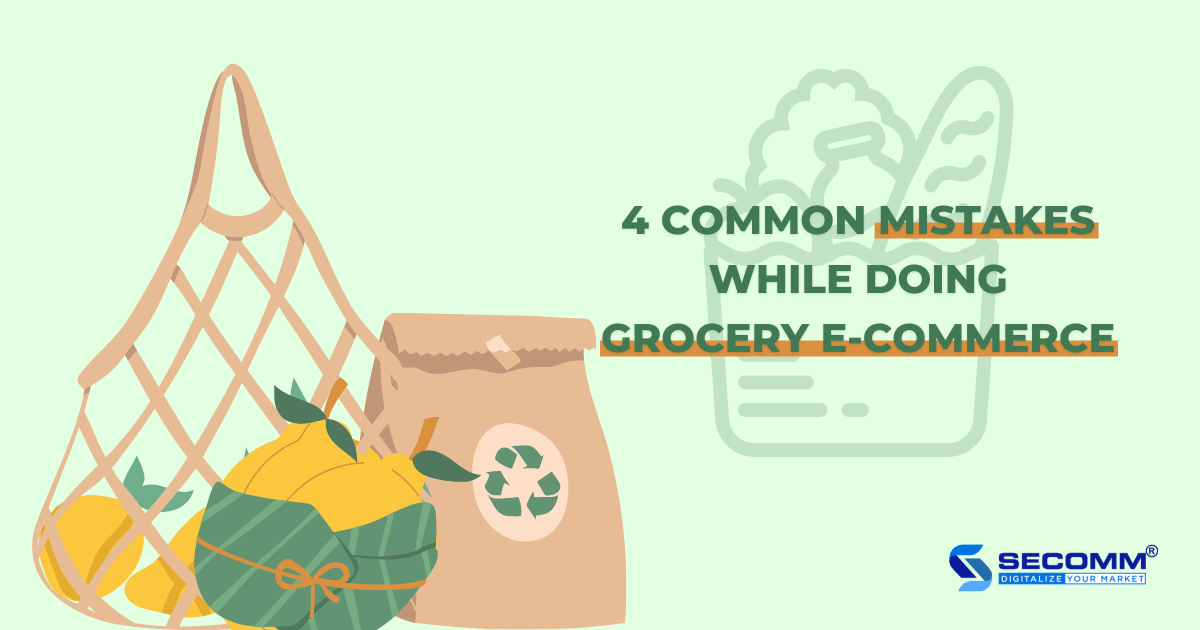
Grocery e-commerce is an inevitable business trend in the current Vietnamese e-commerce market. Some grocery stores have implemented e-commerce very early and have achieved great success, such as An Nam Gourmet, Bach Hoa Xanh, WinMart, and Co.op Online.
However, not all businesses are fortunate to deploy effective e-commerce because risks and wrong decisions when doing business can happen in any market, not only in the eGrocery market.
Some mistakes are fixable, but there are mistakes no matter how much budget and time it takes to make up. Here are some online grocery store mistakes that eGrocery business leaders need to know.

The grocery store business process in chain stores and e-commerce websites is entirely different. However, when implementing e-commerce, many businesses put the entire existing process on the website system without any customization or modification to conform to general operating procedures.
To shift business from offline to online, businesses must face difficulties such as synchronizing data from POS (Point of sale), e-commerce platforms, and e-commerce websites for other systems like CRM, ERP, BI, etc.
Grocery e-commerce is an extraordinary industry, with many complex features such as products with many units, selling methods, weight differences, constantly changing prices (day/week/month/year), expired products that need to be canceled, or imported new must have specific data, complicated payment processes, cumbersome warehousing operations, etc.
In particular, most products in the grocery store are fresh and fast food, so the damage rate is high, and the delivery time needs to be faster than in other fields. In addition, for these items, “housewives” also need to choose the correct delivery time.
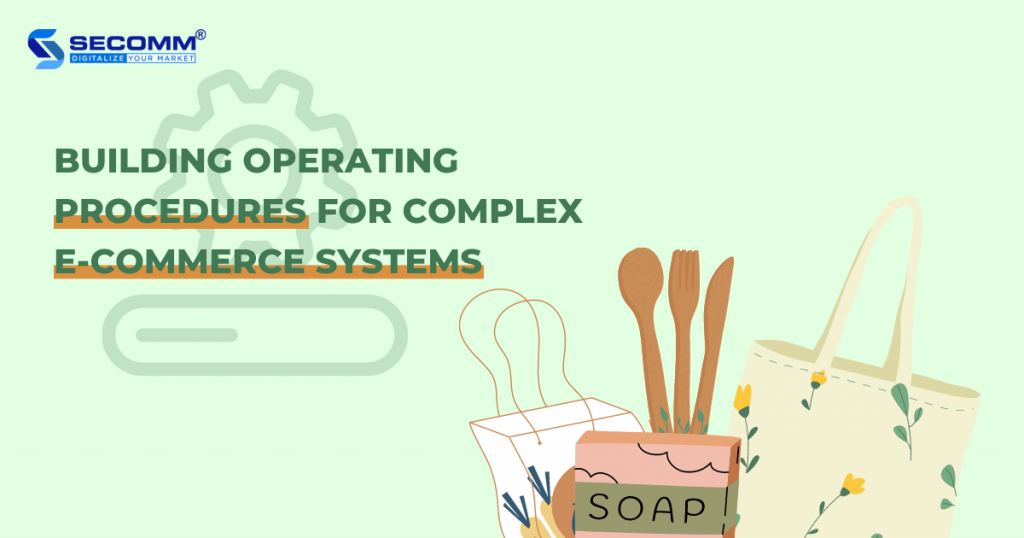
Because of the complexity of the operation process, the requirements for the e-commerce system are also more unique compared to other industries, making it difficult for managers to grasp the business situation and not be able to manage the number of products in stock in each branch.
Enterprises should build their in-house team or look for experienced grocery e-commerce developers to design the system operation process for specific industry and business problems that SaaS platforms cannot provide.
An e-commerce platform is software that businesses use to build an e-commerce website. Choosing a platform is always the first step in the e-commerce business process, so choosing the wrong one will lead to the entire online grocery store strategy going down.
After a period of using the unsuitable platform, businesses are required to “change blood” with another platform. This mistake wastes time and budget to build an e-commerce website for businesses without bringing about the expected results. It takes time to recruit and train employees to get used to the new platform.
To avoid this unnecessary mistake, businesses need to clearly define short-term and long-term goals for the brand, thereby building the criteria for choosing the most suitable e-commerce platform. To do that, businesses can do their research or seek professional advice before making a final decision. Of course, this takes time, but it will save time in the long run for the business.
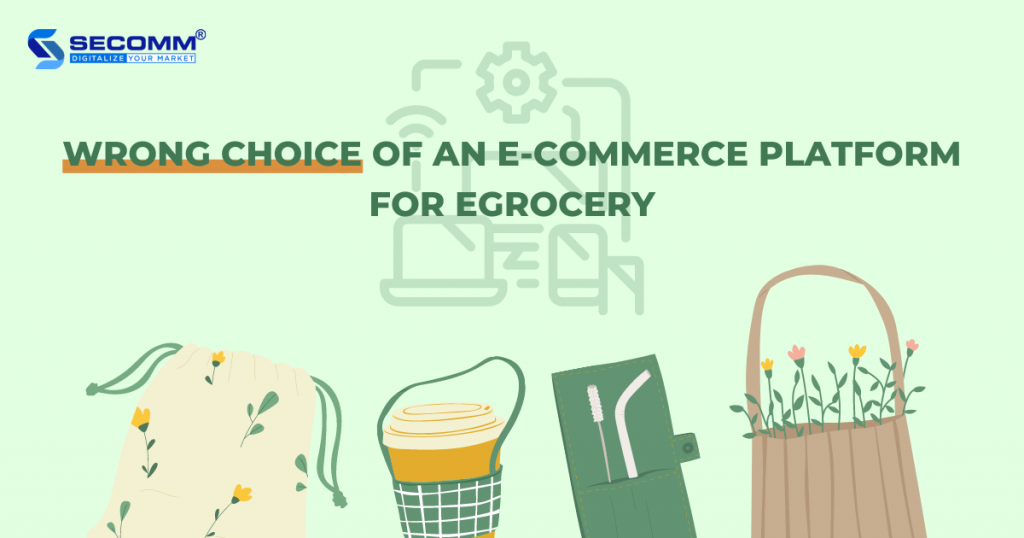
Currently, businesses that want to implement e-commerce step by step often choose Saas (Software as a service) platforms such as Shopify, BigCommerce, and Haravan in the early stages. This helps businesses save budget and time in the short term, market exploration, etc. Then, switch to open source platforms (Open Source) such as WooCommerce, OpenCart, and Magento to upgrade and expand the website system with convenient features for users and businesses.
Businesses with a long-term e-commerce business orientation often choose open source platforms right from the start to long-term companionship with businesses. Starting and developing continuously on an open source platform helps businesses save money and time to switch platforms, and own and fully control the system from source code to customer data, efficiently and proactively develop new features suitable for users and markets.
However, similar to building an operating process, choosing an e-commerce platform does not have a typical “recipe” for all businesses. Hence, each business needs to understand its business strategy, operating model carefully, and so on. in each stage of development.
The interface is essential in the grocery business, and it is necessary to meet UI (User Interface) and UX (User Experience – User Experience) standards. These are two crucial factors in any e-commerce website. However, many businesses forget these two factors when designing websites, leading to consequences such as an unattractive interface, not showing the characteristics of the business and the grocery, poor website performance, and page loading—slow, poor navigation, and few specialized functions for e-commerce, etc.
The UI / UX standard design has not been emphasized. However, the user experience on the enterprise’s website becomes worse, unable to retain users, affecting the revenue and brand positioning of the business.
So when choosing an e-commerce platform, businesses should also choose platforms that can help businesses customize the interface and functionality of the source code.
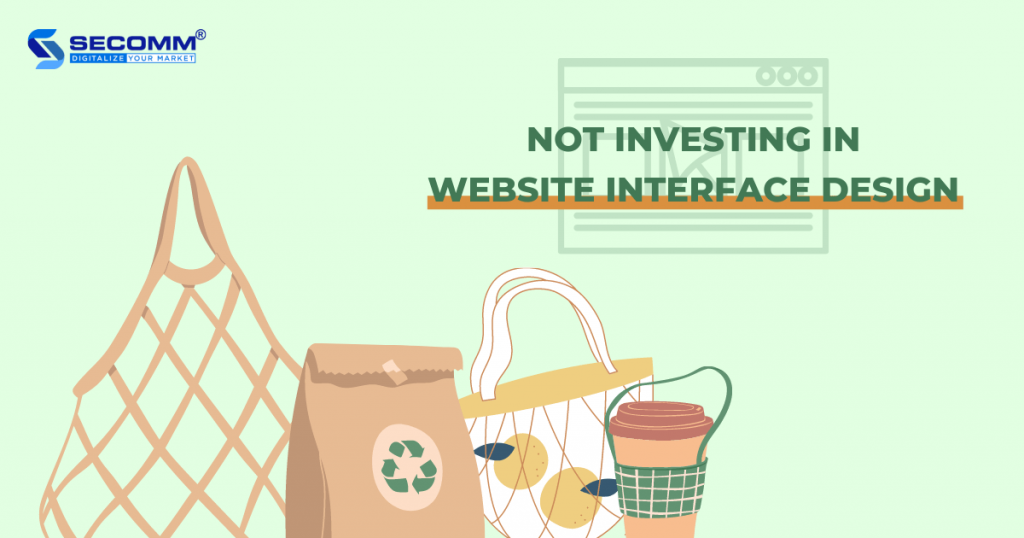
Currently, there are 3 ways to design the interface for a website:
At the right time, the functional system is not what “needs not to have” and “what has is not needed.” For example, in the early stages of entering the e-commerce market, businesses often do not have a certain number of users, so the functions of the Loyalty Program (loyalty program) are not necessary. Instead, businesses should focus on building functions that help exploit potential customers. Then, after having a stable number of users, businesses can gradually build more specialized functions, solving industry-specific problems.
Building a functional system that is not suitable for users’ needs at each time will waste time and cost to build a website without providing a satisfactory shopping experience, affecting revenue efficiency and can be left behind competitors in the industry.

In general, egrocery is the “golden opportunity” for businesses to implement e-commerce. However, to capture opportunities and market share, businesses need to pay attention to many factors, especially the mistakes to avoid mentioned in this article.
With experience in successfully implementing complex grocery e-commerce systems like An Nam Gourmet, SECOMM understands grocery businesses’ obstacles. Contact SECOMM now for a free consultation on detailed e-commerce system development solutions!
 2
2
 3,496
3,496
 1
1
 1
1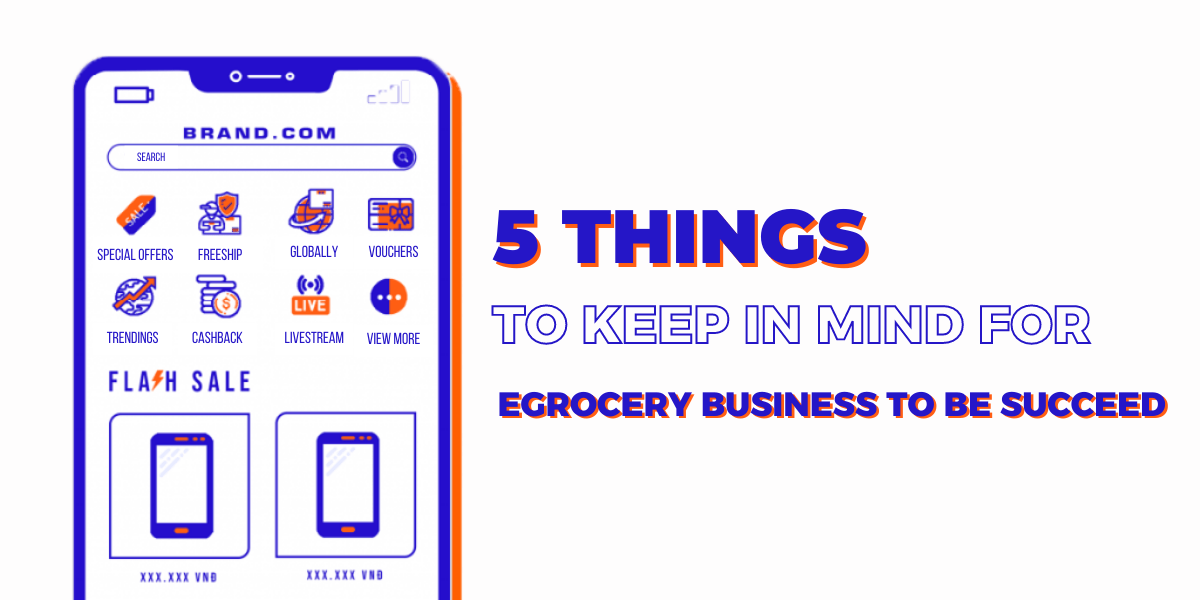
When grocery business activities face many obstacles such as strict lockdown measures by Covid-19, shortage of necessities, and geographical distance, the demand for egrocery increases daily.
Ecommerce marketplaces such as Tiki (Tiki Ngon), Lazada (Lazada Supermarket), Shopee (Shopee Fresh), and super apps like Momo (Online shopping), Grab (Grab Mart), etc. all, in turn, deploy egrocery to respond to consumer needs promptly. In particular, grocery stores’ eCommerce websites such as Bach Hoa Xanh, WinMart, and Co.opmart quickly seized the opportunity and grew impressively!
The egrocery market continued to thrive after the lockdown period was removed, indicating the expanding potential of the grocery eCommerce business.
Not only was grocery eCommerce appearing in the Vietnamese market but also globalization. For example, in the United States market, egrocery has an annual growth rate of 200% (according to Statista).
Businesses must swiftly develop an eCommerce system fit for industry and customers to capture changes in the market. However, administrators must consider several concerns while implementing grocery eCommerce to efficiently engage in the market.
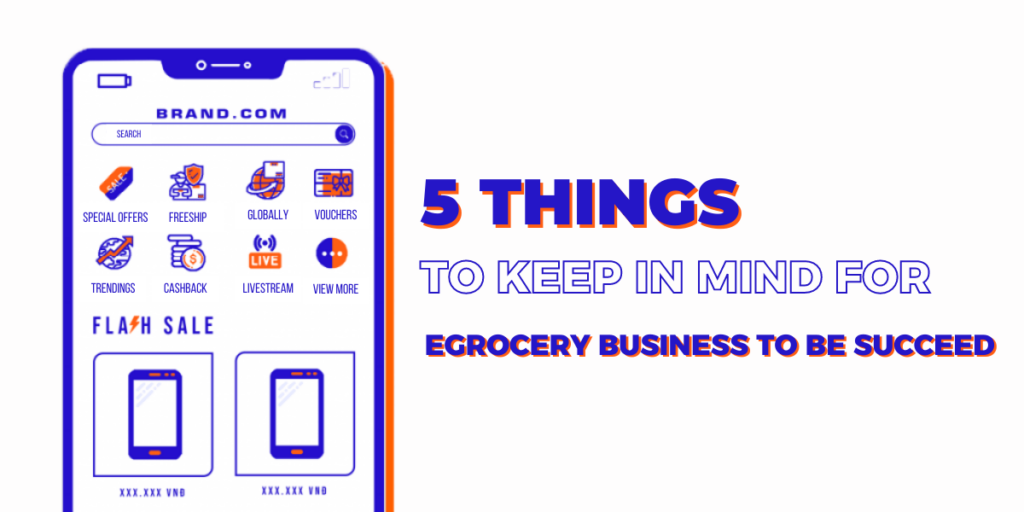
Choosing the right eCommerce platform is essential for any business, not just the grocery industry. An eCommerce platform compatible with business strategies will help companies save time, accelerate the digital transformation process, and save money on deploying eCommerce websites in both the short and long term. In addition, businesses do not need to switch platforms many times, saving time and budget for recruiting and training personnel to familiarize themselves with the system.
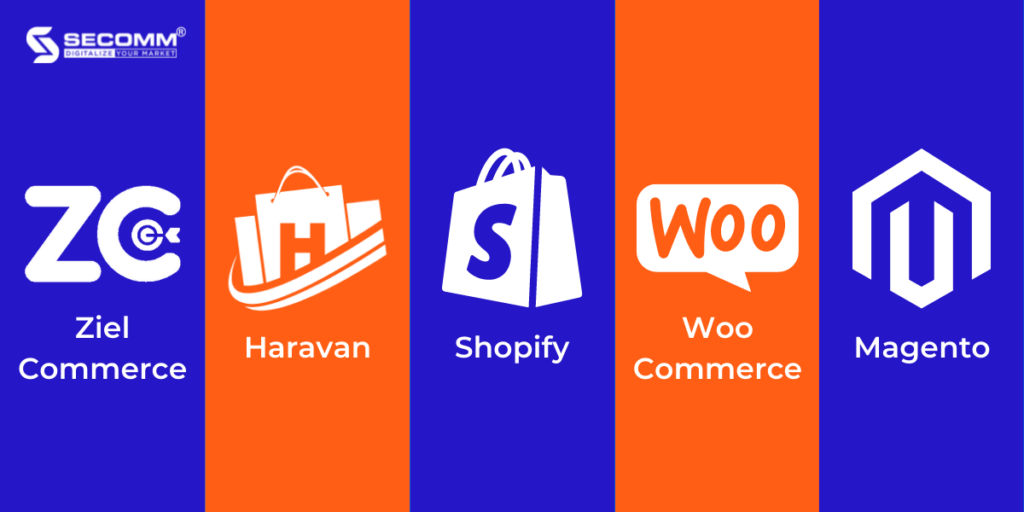
Some grocery business eCommerce platforms include Ziel Commerce, Haravan, Shopify, WooCommerce, and Magento. In particular, Ziel Commerce is a platform designed explicitly for eGrocery businesses.
SaaS platforms like Haravan and Shopify are suitable for SMEs (small and medium enterprises), startups, or new entrants to eCommerce. WooCommerce is ideal for businesses that need to own the source code and customize the website at an affordable cost. The Magento platform is suitable for many different business models (B2C, B2B, B2B2C, etc) and many different business sizes (SME, startup, large corporation, etc).
This platform meets the needs of building an industry-specific eCommerce website under its characteristics, with full ownership of the source code and the ability to customize the website. However, due to the prolonged deployment time and high prices, many businesses are hesitant to use Magento, while many enterprises trust it.
A big problem that egrocery businesses need to pay attention to is that the grocery industry has a relatively complicated operation.
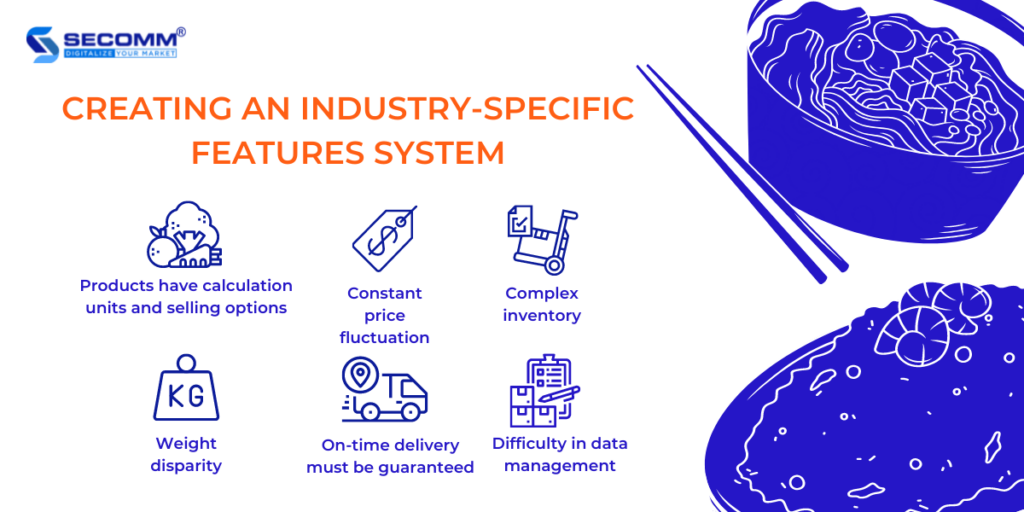
Grocery products have many units of measure, weight differences, and different ways of selling; prices constantly fluctuate and update continuously by day/week/month/year.
The import and export of warehouses are complicated (general warehouse, store warehouse, warehouse for each area in the store), so when deploying an online grocery store, businesses need to synchronize the price and quantity of products so that when restocking, the data will not be lost. Weight and cost data on branches are changed under control, avoiding the lack of synchronization between frontend and backend, causing data processing to be interrupted.
At the same time, grocery products are mainly fresh foods such as meat, fish, eggs, milk, etc, so they need to be refrigerated, delivered quickly, or selected with the correct delivery time.
Handling all the problems in the complex operating process of the grocery industry requires a team of highly qualified IT and eCommerce personnel to design an eCommerce system that is suitable for the specific process and requirements of the business – something current SaaS platforms are not enough to meet.
When running an online grocery store, the user experience requirements are very high; from navigating shopping behavior to the checkout process, order delivery needs to be optimized. Because user experience increases the likelihood of customers placing their first order, it also gives customers more reasons to buy again, contributing to a competitive advantage over competitors in the same industry.
There are many ways for businesses to enhance the user experience, such as layering product categories to navigate customers more intuitively and building specialized functions such as quick add products to cart, fast checkout, search enhancements, and product recommendations based on collected data, etc.
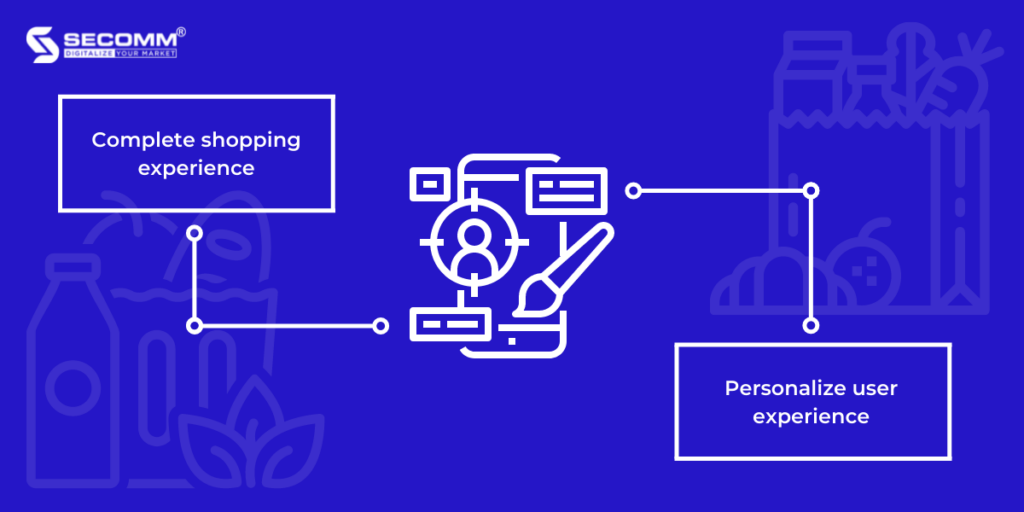
At the same time, personalizing the user experience is an essential factor in the customer’s shopping journey. Businesses exploit, analyze, and leverage data to build the right customer journey, match consumer behavior, and increase the user experience level of personalization.
Personalize from CMS content and display products to navigate the shopping journey for businesses to increase loyalty and customer lifetime value (CLV).
The secret of doing an online grocery business is building incentive programs suitable for customer segments.
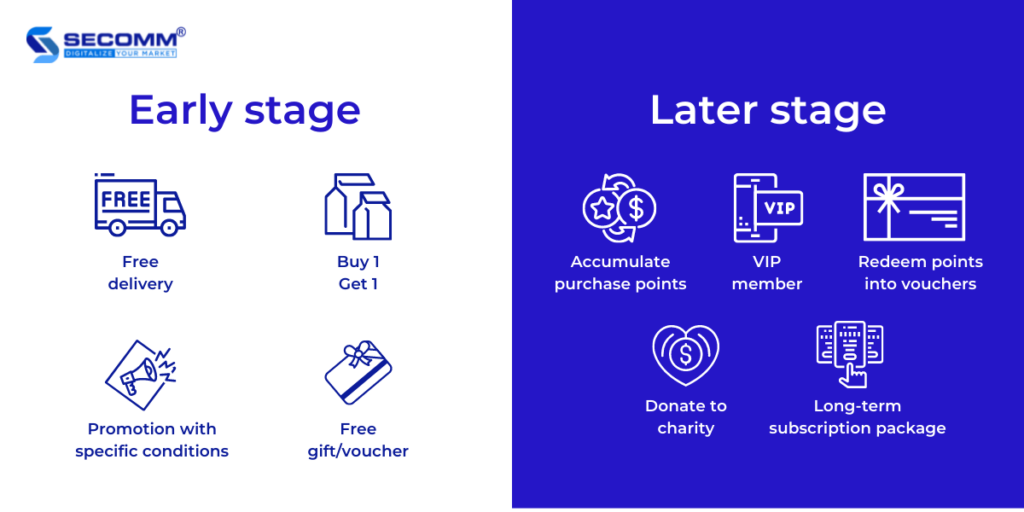
Some popular promotions that businesses can apply in the early stages include free shipping, buy one get one free, gifts/vouchers, or promotions with specific conditions (certain items reach a particular value).
After that, businesses can deploy loyalty programs such as accumulating points for purchases, VIP membership, converting reward points into discount codes, donating bonus points to charities associated with the brand, subscription plans, etc.
Omni-channel is one of the inevitable eCommerce trends in 2022; the application of Omni-channel will help businesses do online grocery business more conveniently.
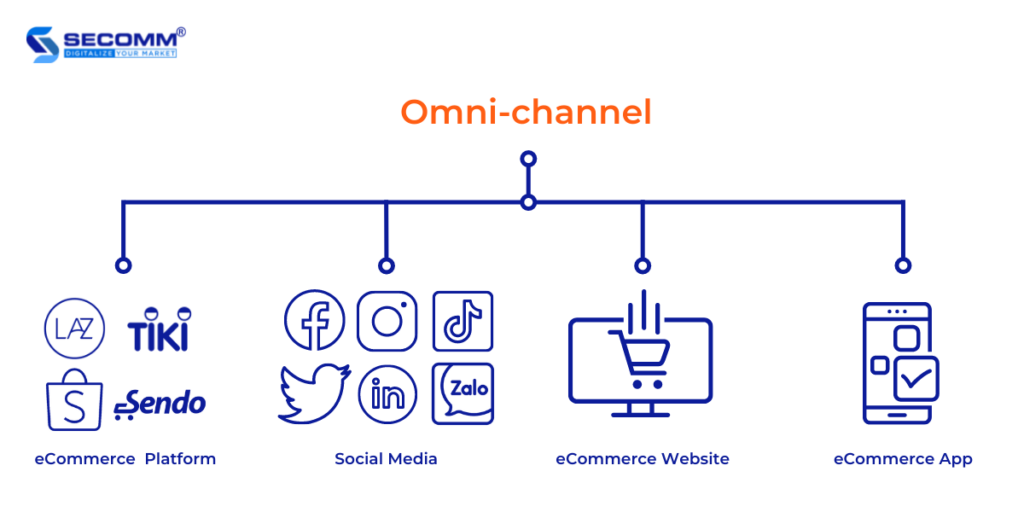
Omni-channel will help customers’ shopping experience be seamless from the physical store to the website, helping businesses follow customers from eCommerce platforms, social networks, websites, etc.
In addition, by collecting and analyzing information from Omni-channel, businesses can efficiently study customer behavior, preferences, and psychology and know whether they are satisfied with the product, service quality, or not to take reasonable measures to change.
It can be said that the grocery eCommerce business has both opportunities and challenges, requiring business managers to think carefully about tactics to make the most effective steps. But, of course, that work is not easy, finding a companion is also tricky, building an in-house team is not easy, and businesses have to pay a lot of opportunity costs and time to reach the “finish line” themselves.
With experience in successfully implementing complex grocery eCommerce systems like An Nam Gourmet, SECOMM understands grocery businesses’ obstacles. Contact SECOMM now for a free consultation on detailed eCommerce system development solutions!
 2
2
 4,346
4,346
 0
0
 1
1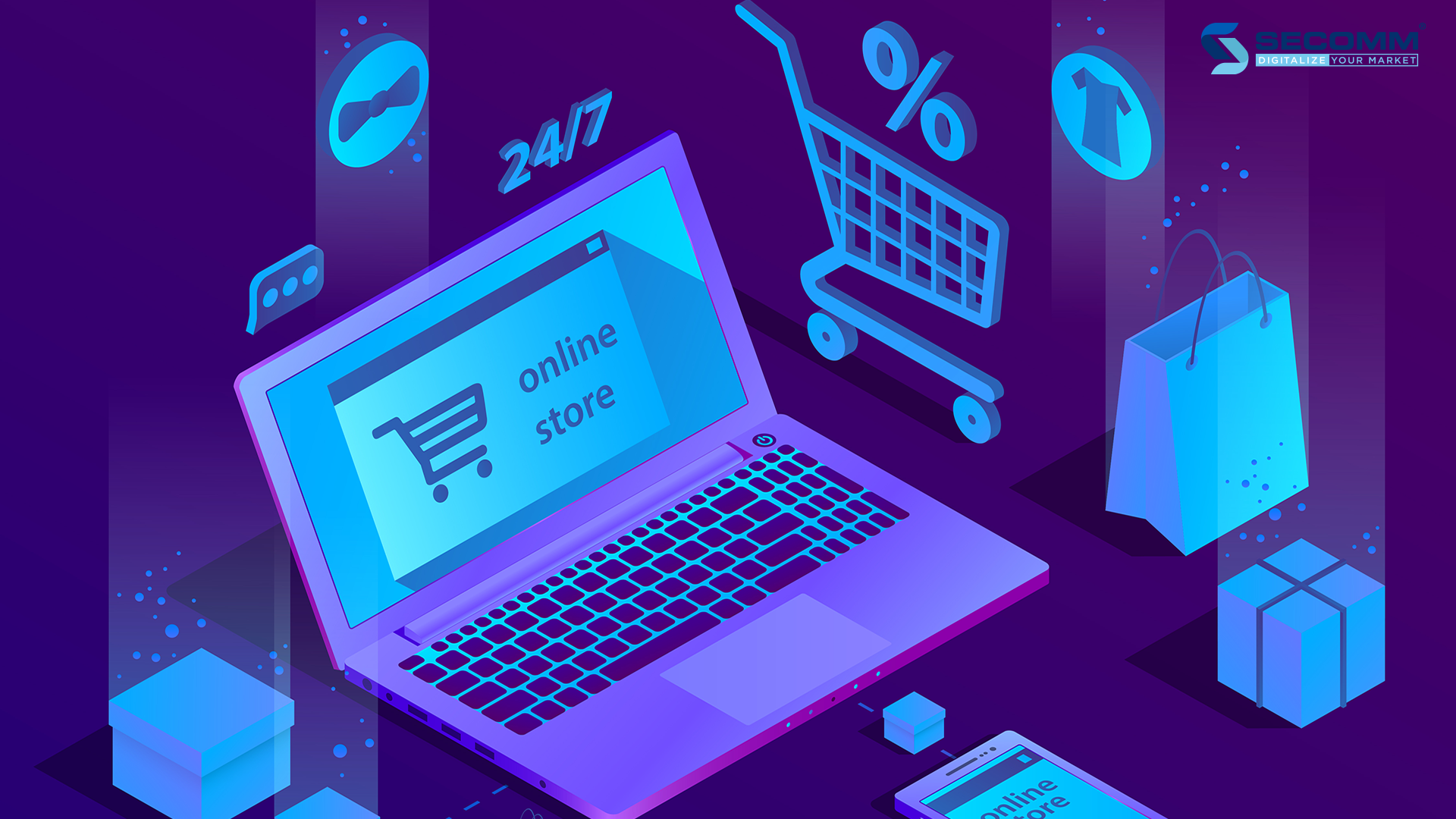
The variety of products published on every ecommerce website is always diversity-guaranteed to meet almost the market needs. However, ensuring the criteria of goods quality has been an unresolved question up to now, becoming one of the barriers to the ecommerce industry. The burning issues of low-quality products, counterfeit consumer goods are eventually uncontrollable and exist in the market. Those effects can be derived from a couple of factors that can be analyzed from the perspective of the sellers, ecommerce enterprises, and consumers.
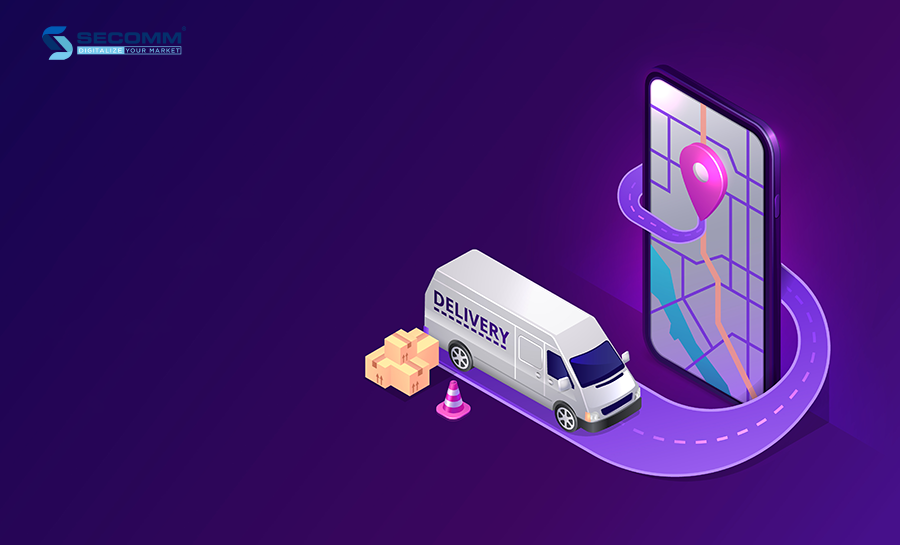
The low-quality of goods has come from the traditional trading model operated offline, and merchants inevitably take responsibility in that case. Although consumers can contemplate the offline model seriously, the product quality is still sellers’ responsibility and control. Uncontrollable-quality sources become a critical issue when merchants provide goods with a profitable price to get much higher returns by selling fake or inferior quality products with very attractively “low” prices. In the flourishing process of online business, those unsolved issues have the chance to spread across the online-offline frontier and lose control.
When the quality issue emerges, e-firms are the first to be impacted. Those types, namely B2C and C2C, act as middlemen for merchant support to sell products on ecommerce exchanges.
Consequently, those enterprises restrict the source of inferior products and entirely rely on consumer feedback to address the issue in a very passive way. The quality barrier prevents enterprises from gaining consumer trust to maintain their loyalty.
The spread of low-quality goods partly comes from consumer awareness. In the e-market, there is still a consumer group preferring inexpensive or on-sales items to other high-price and authentic products to save the living cost or try a variety of products. They tend to choose low-price items neglecting the origin and information while never complaining about the lack of product-clarification. Low-awareness behavior gradually contributes to the growth of uncontrollable-inferior products and as a result, the development of barriers to the ecommerce industry.
The growth of poor quality products depends on many factors and the responsibility of sellers, businesses, and consumers for the sake of a healthy and trustworthy market.
The need to change buying behavior from offline to online is also one of the barriers to the ecommerce industry in Vietnam. To certainly clarify, take a look at three fundamental behavior-levels happenings when consumers make a purchase.
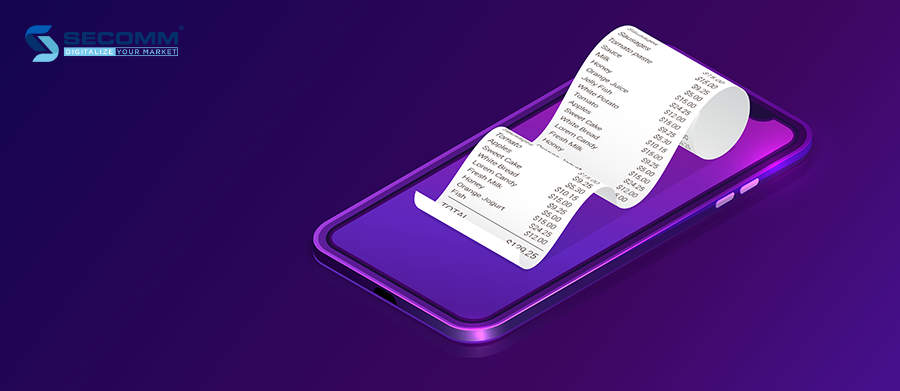
The first group is pure traditional shoppers, who tend to see and touch what to buy. They wholeheartedly believe their eye-process can ensure more quality and conformity of the product. Therefore, they never trust any online items because of unmanageable-value. As a consequence, changing the buying habit of this group is the most challenging requirement.
The second group is hybrid buyers combining traditional and modern buying styles. That hybrid group tends to select-for-best. For instance, they can quickly add a book or ten pens to their cart because it is more convenient than buying at the bookstore. However, they will directly go to a clothing store to choose an item that fits their size and ensure the fabric quality. That behavior similarly happens when they buy shoes, bags, or other fashion items. In brief, hybrid customers have changed their buying habits in the most popular fields over the years. Hence, there will be much higher requirements for unique products such as fashion items, technology devices, motorcycles, and cars in some cases.
The last group tends to complete online shopping. They take advantage of online shopping as a convenient and speedy tool, helping them save more time during the shopping process. However, this group still has some challenges: maintaining trust-worthy and credibility to upgrade target consumers to loyal customers.
While the increasing mobile-usage has somewhat raised the online shopping demand, the user-habit transformation is a worth-factor that needs better solutions in long-term strategies or it will be one of the barriers to the ecommerce industry. In particular, the significant element affecting ecommerce user-habit is the story of quality-expectation and the reliability of online stores.
Long-term productive resources in the ecommerce market are also one of the considerable barriers to the ecommerce industry. For this purpose, the ongoing need includes warehouse management, branding & marketing, payment & shipping processes. Consequently, all of the elements should require enterprises to keep the non-stop funding on continuous losses.

Along the same lines, small and medium-sized enterprises can not afford long-term competition versus the ecommerce giants in the market. For instance, international names like Alibaba, JD.com, or Amazon create an enormous distance for other SMEs to overtake.
In general, the capital investment race invisibly makes large ecommerce businesses more robust and extensive. Meanwhile, it oppositely generates more barriers to the ecommerce industry in Vietnam due to the lack of sufficient capital in the long term. Following this, depending on each organization, there will be many issues when operating an e-business. Therefore, it is necessary to have the most comprehensive outline and meticulous ecommerce study to set the oriented developing goals.
 2
2
 8,718
8,718
 0
0
 1
1Subscribe to get the latest eBook!
Hotline